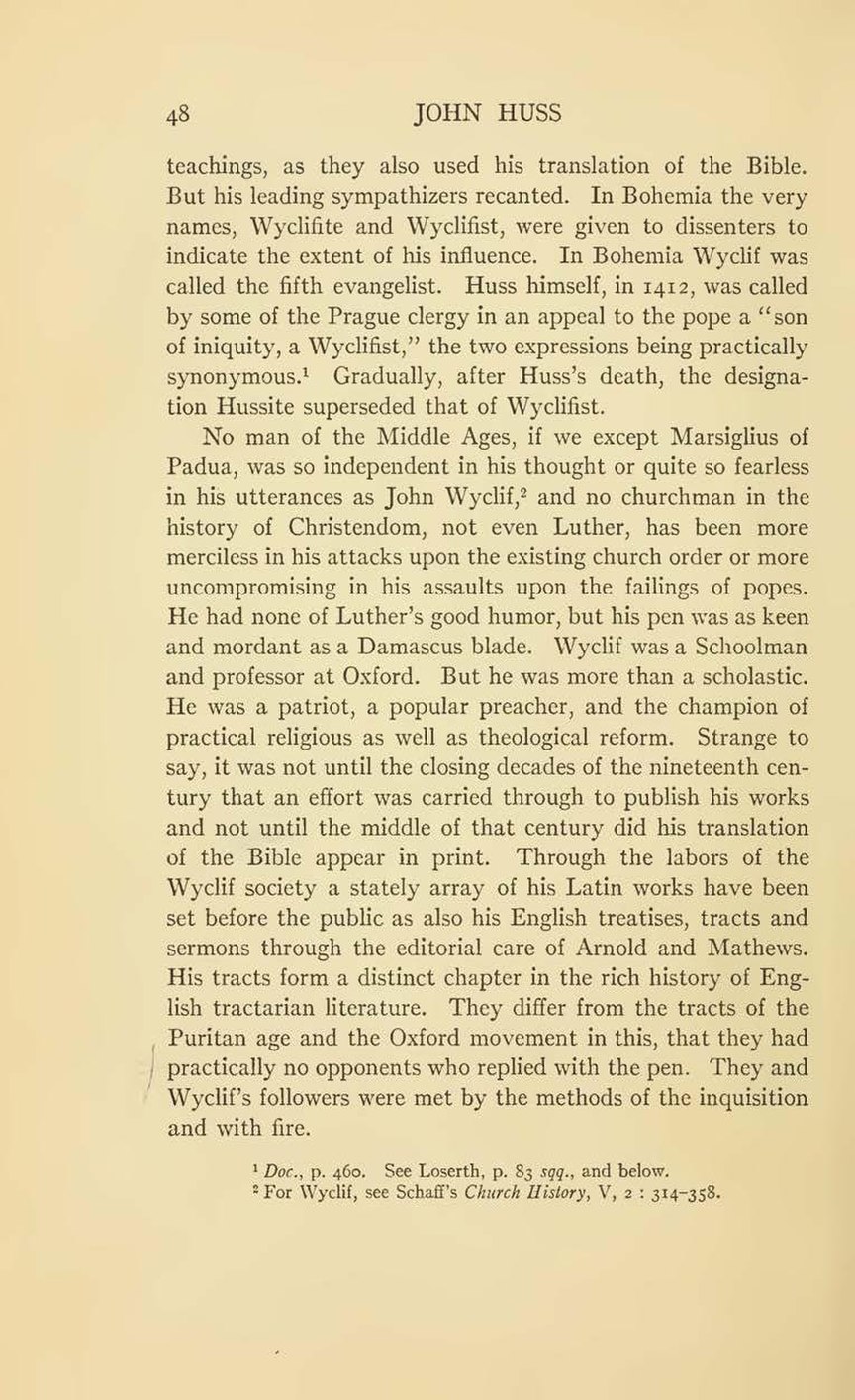teachings, as they also used his translation of the Bible. But his leading sympathizers recanted. In Bohemia the very names, Wyclifite and Wyclifist, were given to dissenters to indicate the extent of his influence. In Bohemia Wyclif was called the fifth evangelist. Huss himself, in 1412, was called by some of the Prague clergy in an appeal to the pope a “son of iniquity, a Wyclifist,” the two expressions being practically synonymous.[1] Gradually, after Huss’s death, the designation Hussite superseded that of Wyclifist.
No man of the Middle Ages, if we except Marsiglius of Padua, was so independent in his thought or quite so fearless in his utterances as John Wyclif,[2] and no churchman in the history of Christendom, not even Luther, has been more merciless in his attacks upon the existing church order or more uncompromising in his assaults upon the failings of popes. He had none of Luther’s good humor, but his pen was as keen and mordant asa Damascus blade. Wyclif was a Schoolman and professor at Oxford. But he was more than a scholastic. He was a patriot, a popular preacher, and the champion of practical religious as well as theological reform. Strange to say, it was not until the closing decades of the nineteenth century that an effort was carried through to publish his works and not until the middle of that century did his translation of the Bible appear in print. Through the labors of the Wyclif society a stately array of his Latin works have been set before the public as also his English treatises, tracts and sermons through the editorial care of Arnold and Mathews. His tracts form a distinct chapter in the rich history of English tractarian literature. They differ from the tracts of the Puritan age and the Oxford movement in this, that they had practically no opponents who replied with the pen. They and Wyclif’s followers were met by the methods of the inquisition and with fire.
